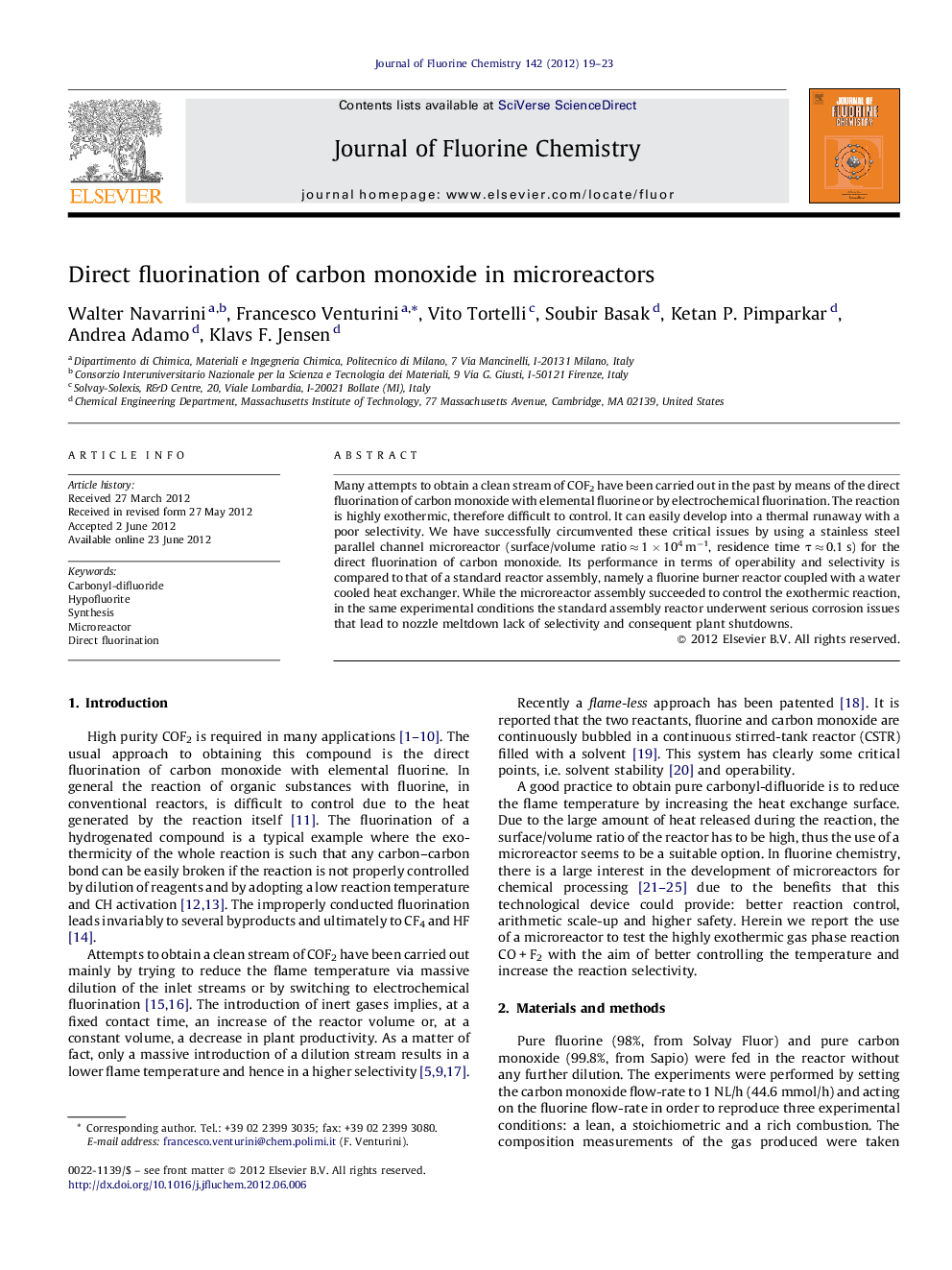| Article ID | Journal | Published Year | Pages | File Type |
|---|---|---|---|---|
| 1314550 | Journal of Fluorine Chemistry | 2012 | 5 Pages |
Many attempts to obtain a clean stream of COF2 have been carried out in the past by means of the direct fluorination of carbon monoxide with elemental fluorine or by electrochemical fluorination. The reaction is highly exothermic, therefore difficult to control. It can easily develop into a thermal runaway with a poor selectivity. We have successfully circumvented these critical issues by using a stainless steel parallel channel microreactor (surface/volume ratio ≈ 1 × 104 m−1, residence time τ ≈ 0.1 s) for the direct fluorination of carbon monoxide. Its performance in terms of operability and selectivity is compared to that of a standard reactor assembly, namely a fluorine burner reactor coupled with a water cooled heat exchanger. While the microreactor assembly succeeded to control the exothermic reaction, in the same experimental conditions the standard assembly reactor underwent serious corrosion issues that lead to nozzle meltdown lack of selectivity and consequent plant shutdowns.
Graphical abstractThe direct fluorination of carbon monoxide with pure fluorine is highly exothermic, thus difficult to control. It can easily develop into a thermal runaway with a poor selectivity. Under rich conditions the main product is COF2 together with the unreacted carbon monoxide but in excess of fluorine perfluoro methyl hypofluorite (CF3OF) is formed along with the main product.Figure optionsDownload full-size imageDownload as PowerPoint slideHighlights► The synthesis of COF2 from pure CO and F2 is a highly exothermic chemical reaction. ► Increase in selectivity of the reaction by a range between 15% and 50%. ► Enhanced the carbon monoxide conversion up to 30%.
